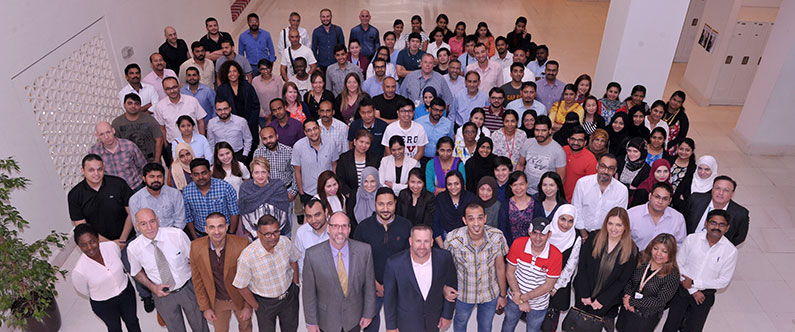Delegates learn disease containment strategies
 Thomas Doyle and Sean G. Kaufman with some of the delegates
Thomas Doyle and Sean G. Kaufman with some of the delegates
Strategies on how to contain diseases like MERS or ebola in a hospital setting was the topic for the latest Health and Safety Seminar Series at Weill Cornell Medicine-Qatar (WCM-Q).
Now in its seventh year, the annual course deals with all aspects of health and safety within both in a laboratory and clinical healthcare setting. This year’s theme was Clinical Containment Strategies for Emerging Infectious Diseases.
Almost 300 nurses, physicians, dentists, pharmacists, researchers, medical technologists, and administrative professionals attended WCM-Q to hear from Sean G. Kaufman, a recognized US expert and trainer in behavioral sciences, infectious disease control, emergency preparedness and risk communication.
The seminar used an interactive approach to deliver tangible and real-life lesson examples to help mitigate and manage risks to medical and laboratory staff that work with and around potentially infectious disease threats. The seminar taught clinical containment strategies including lessons learned from the front line of infectious disease research and management of isolation unit staff when treating infectious patients.
Thomas Doyle, director of environmental health, safety & security at WCM-Q, said the seminar, which is fully accredited, was very important for people who may be working with infectious diseases in a clinical setting.
Mr. Doyle said: “It is critical that healthcare and laboratory personnel review their behavior and practices when working with or around potentially infectious agents in an effort to develop or improve infection control programs and techniques.”
“This one-day seminar series proved particularly popular and I’m very pleased that so many people joined us and proactively engaged with the course and its goals.”
Topics that the seminar examined included the creation of isolation units, personal protective equipment, the mitigation of biological risk, and emergency medical triage strategies.